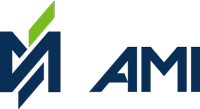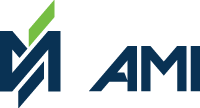PROGRAM
The 7th Edition of the AMITech Seminar will be virtual and live from May 17-21, 2021. The seminar will be broadcast simultaneously in English and Spanish. Select the program of the language of your preference.
*Event time GMT -5
PROGRAM FOR PRESENTATIONS IN ENGLISH
| 09:00 – 09:45 | TMdrive-e3: A New Generation of Industrial Drives AC drives technology is developing faster and so the control algorithms. Starting from the Volt per Hertz, passing through the Field Oriented Control, and then Direct Torque Control. TMEIC has developed its latest AC Drive TMdrive e3, which control motors using the most innovative control algorithm TRU TORQUE CONTROL. TTC gives great advantages to different applications in the industry, specially running at low speed and in sensorless mode. This presentation explains an overall view of this new innovative algorithm and the advantages over its predecessors. Speaker: Christopher Uliana |
| 10:00 – 10:45 | Semiconductor Reliable Operations While it is certainly true that high power semiconductor devices greatly increased the long-term reliability of power electronics systems, however it’s also out of doubt that wrong practices in the assembly of power semiconductors and/or their field maintenance can dramatically reduce the expected operation time of power systems. Speaker: Bruno Passerini |
| 11:00 – 11:45 | Digi LCIe2 DigiLCIe2 is a drive used to control high power synchronous motors, either to improve motor starting to reduce equipment stress or to operate at different speeds. This drive has a converter to excite the motor field, and a rectifier and inverter section to supply the motor armature. It acts as a current source and uses the motor CEMF at load side to commutate in sequence the inverter thyristors, which is the reason it is called Load Commutated Inverter (LCI). Thyristor technology made this drive an efficient, robust, and low-cost solution compared with their counterpart Voltage Source Inverter (VSI), for high power applications above 5 MW, like: cement mills, fans, pumps, compressors, wind-tunnel turbine, or gas turbine starter. DigiLCIe2 offers special features including fully digital control with advance diagnostics, air cooling, modularity, N+1 redundance, among others. Speaker: Eric Martinez |
| 09:00 – 09:45 | Dual Purpose Product Upgrading the direct current Drive and Motor System to the more modern alternate current (AC) technology requires high levels of investment and extended shutdown times. Partially postponing or updating systems involves changes throughout the energy conversion device chain (drives, motors, installation, etc.). Nowadays, an option exists which makes it possible to upgrade while taking advantage of new drive technologies, by using an inverter for induction motors programmed to energize a DC motor. The new dual purpose drive technology helps facilitate upgrade by allowing replacement of only the DC drives with standard AC inverters, while reusing the remaining system components such as motors, wiring, instruments, etc. This makes it possible to prevent system obsolescence without sacrificing the upgrade to AC technology, in more appropriate shutdown times and with gradual replacement of induction motors according to the capital and line stoppage budgets. Speaker: Rommel Villarreal |
| 10:00 – 10:45 | Safety Locking on AC and DC Drives Long products mills are prone to a high level of product changeover. Each product changeover may involve disabling or completely changing a stand. International safety standards demand that each person involved in the process of changing the stand apply an effective and individual lock on the Drive or Drives of the stands that will be intervened. This regulation implies exposing not necessarily qualified personnel to electrical panels, with their inherent hazards. Additionally, qualified electrical personnel may be inevitably exposed to highly caloric energy in each operation of the connection switch. This presentation describes methods used to mitigate the exposure to risk of electrical accident for both mechanical and electrical personnel, as well as improving productivity by minimizing downtime and increasing the lifetime of drives, by reducing maneuvers. Speaker: Gilberto Castillon |
| 11:00 – 11:45 | DigiQUAD: Digital Control Systems for Twin Synchronous Motors on dual pinion mills The dual pinion system is highly used in grinding systems that requires a higher power than the limit the single pinion gear allows. Two independent synchronous motors coupled via pneumatic clutches to a dual pinion mill, enable the ability to perform load balance control when the difference in kilowatts exceeds the specified level. However, to achieve this, it is necessary to have multiple control loops, sometimes analogic, and distribute them in several control modules. Therefore, despite being a suitable solution for the application; its maintenance, operation and spare parts management can get complex. Speaker: Jorge Haros |
| 09:00 – 09:45 | DigiGear / DigiGearSS Safe Power Distribution has always been an important challenge. A quick look on history, and nowadays technology advances, will get us on how we are handling this with the experience of what has been found on industry and with AMI Capabilities, detailing Protections, Primary and secondary functions, Applications, Models and Options. Speaker: Fernando Rivera |
| 10:00 – 10:45 | Medium Voltage Drives MVe2, MVGe2, DBMVe2 In the late 1970s solid-state medium voltage (MV) ac motor adjustable speed drives (ASDs) began to appear commercially. These first installations were larger, expensive, less reliable, and efficient than their modern counterparts. For the purpose of our discussions, we will consider medium voltage as three-phase, 1,000 Volts or over. Speaker: Rosendo Cabral |
| 11:00 – 11:45 | Excitation Systems: DigiFEX Family In the industry we can find different types of synchronous motors with multiple applications, the truth is that very few are used in secondary processes, contrariwise, mostly of these motors serve main processes with high demand and are critical for the plant operations. However, we commonly have an excitation system whose operation and diagnostic information is insufficient or practically null, making troubleshooting and problem prevention a complex and time-consuming task. Speaker: Jorge Haros |
| 09:00 – 09:45 | Large Synchronous Motor Problems Speaker: Charles LeMone |
| 10:00 – 10:45 | SmartDisplay AMI Smart Display is the new interface used in the drive systems with a high-visibility touch panel display that allows quick access to data of the equipment as well as information for trouble shooting from the local display or remotely from a computer or smartphone. It has enhanced tools that allows a simplified troubleshooting and trace-back of systems faults without the need of using the drive configuration tool. These functions contribute to stable operation and maintainability while expanding the operability of equipment monitoring. Speaker: Gilberto Castillon |
| 11:00 – 11:45 | DigiSVC DigiSVC is a Static VAR Compensator (SVC) based in Thyristor Controlled Reactor (TCR). DigiSVC is designed focused to improve the Electric Arc Furnaces (EAF) power supply in Meltshops, as they represent one of the major loads in power distribution systems, with load variations in the MW range. DigiSVC compensates for current unbalances between phases, voltage rapid fluctuations, flicker, provides harmonic filtering and can regulate voltage, PF or VAR’s. Therefore, this can be used to achieve the power company requirements to avoid penalties, as well, to increase the EAF productivity and durability. Also, DigiSVC can coordinate with AMI SmartFurnace Regulator to increase his performance. Speaker: Eric Martinez |
| 09:00 – 09:45 | DigiFCR X3, DigiFCR CYC, DigiFCR SVC Today there are many obsolete complex power electronic systems in the worlds. It is possible to maximize the benefits of these equipment features by upgrading to the most powerful and flexible technology. This new platform used in DC EAFs, Cycloconverters, SVCs, and others, permits the customization of the solution, and may fire different kind of thyristors such as SCRs, BCTs, or LTTs. It´s powerful processor allows to process innovative control loops that help to exceed the expectation of the application. Despite this presentation talks specifically about upgrading DC EAFS (DigiFCR X3), cycloconverters (DigiFCR CYC) and SVCs (DigiFCR SVC), the limit is the imagination. Speaker: Rommel Villarreal |
| 10:00 – 10:45 | COIW10 The Human Machine Interface (HMI) is the interface between the process or machine and the operator. This is the primary tool by which operators and line supervisors coordinate and control the industrial and manufacturing processes in the plant. The purpose of the presentation is to talk about the COIW10 (Control Operator Interface). The COIW10 is a versatile serverless HMI application software that provides a powerful solution for human machine interfaces. Speaker: Arturo Gonzalez |
| 11:00 – 11:45 | AC vs DC AC technology will eventually replace DC, but DC it is still a viable technology. The installed base of DC drives and motors and the accumulated experience with this technology are important factors to consider, but the improvements in performance and maintenance requirements of AC are also determinant when considering new installations or revamps. Newer and more reliable power components will eventually match the SCR reliability and low voltage oil-filled capacitor will overcome the life issue that those devices represent. Speaker: Bernardo Sainz |


